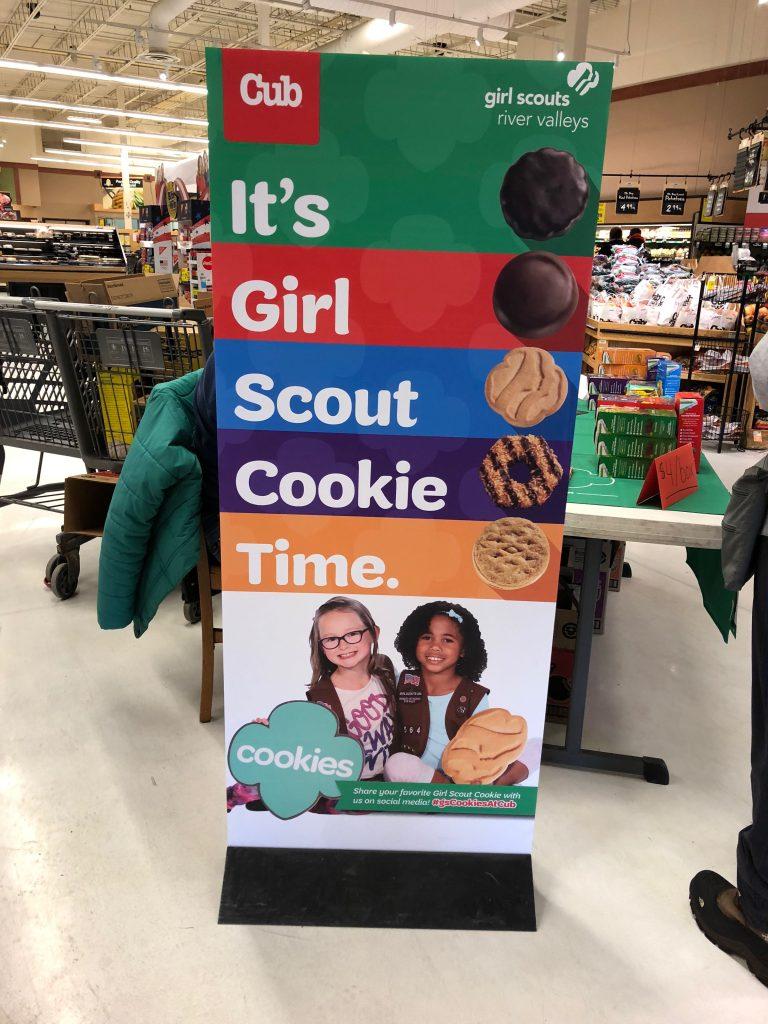
For over 100 years, the Girls Scouts of America have been treating us to some of our favorite cookies through their most well-known fundraiser. The tradition began in 1917, five years after Juliette Gordon “Daisy” Low started Girl Scouts in the United States. The cookie sales started with humble beginnings, born as a way to finance the group’s activities. Now, over 100 years later, the Girl Scout Cookie Program has developed and evolved, and is a vehicle for teaching five essential skills—goal setting, decision making, money management, people skills, and business ethics.
In the 1920s and 30s, the Scouts would bake their own sugar cookies and sell them door to door. Former First Lady and Girl Scout Lou Henry Hoover inspired the first national sale of Girl Scout cookies in 1933 as a way to cope with the effects of the Great Depression. In 1936, the Scouts began licensing the first commercial bakers to produce cookies that would be sold nationwide by girls in Girl Scout councils. By 1937, more than 125 Girl Scout councils reported holding cookie sales. This prosperity was stalled during World War II when sugar, flour, and butter shortages required Girl Scouts to pivot, selling the first Girl Scout calendars in 1944 as an alternative way to raise money for activities.
Throughout the rest of the century and pushing into the twenty-first century, the Girl Scouts of America increased their variety of cookies, and today there are eight different kinds of cookies supplied by two different officially licensed companies—Little Brownie Bakers and ABC Bakers. At one point there were up to 29 different baking companies making Girl Scout cookies, but starting in the late 1970s, the number went down to four in order to streamline the process. The Scouts now offer an eight cookie variety including new additions like S’mores and Toffee-tastic joining the older classics: oatmeal and peanut butter Do-si-dos; crisp caramel, chocolate and coconut Samoas; lemony Savannah Smiles; peanut butter and chocolate Tagalongs; crisp, shortbread Trefoils; and fan favorite Thin Mints.
The Girl Scout Cookie Program is the largest entrepreneurial program for girls in the world, and is powering the next generation of women entrepreneurs. Amy Bazley, Troop leader and mom of two Girl Scouts, describes how the Girl Scout program is supposed to be girl led: “My job is to guide them and help provide the opportunities for what they want to do.” During cookie sales, the Scouts are encouraged to make eye contact and provide a high standard of customer service when they’re at their booths. When cookie sales conclude in mid-March, the Girl Scouts decide together how much to save for their activities and how much to donate to an organization of their choosing. For example, last year Bazley’s troops decided to donate some of their earnings to the Oregon Humane Society and some to JOIN, a small nonprofit based in outer east Portland that takes a very individualized approach to solving homelessness. “The goal of the cookie selling program, in general, is for the girls to have experience running their own business,” explains Bazley.
In recent years, there have been several controversies surrounding the Girl Scouts and their beloved cookies. In 2014, two Girl Scouts made national press when they tried to convince the national organization to stop using palm oil, an industry linked to the major issue such as the deforestation, habitat degradation, climate change, animal cruelty and indigenous rights abuses in the countries where it is produced. The organization responded, pledging to reduce the amount of palm oil used, but not getting rid of it completely. The Girl Scout Cookie Program has also been an outlet for political protest. In 2012, a Denver troop received criticism for allowing a transgender girl to join its troop, causing opponents to advise people to stay away from the cookies and supporters to encourage sales. These protests highlight the overarching goal of the Girl Scout program: to empower young girls to find their voice through business leadership.
































